Other Guides
In this article
Is Python Hard to Learn? Our Experts Say...
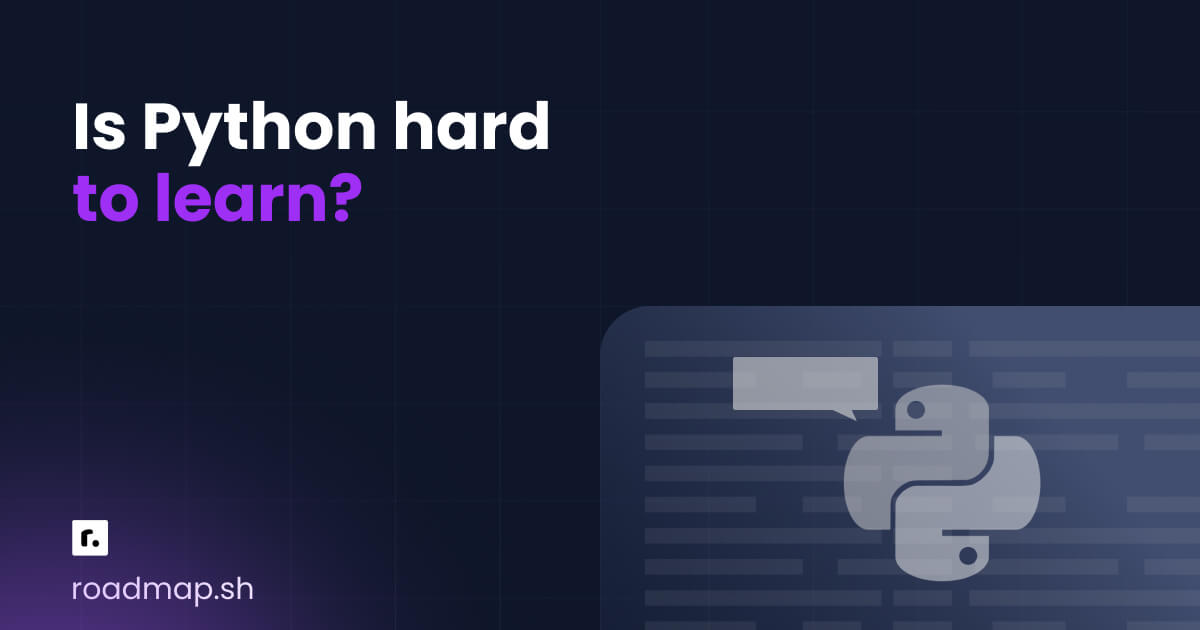
Python is considered one of the easiest programming languages to learn. Its syntax is clean and resembles English, which makes it intuitive for beginners to read and write code. Compared to other programming languages, it feels more approachable thanks to its design and focus on readability.
However, just like any other skill worth learning, starting a Python learning journey takes time and consistent effort. This is especially true if you're new to coding or haven’t had much experience with technical thinking. The good news is that plenty of non-coders, such as business analysts, marketers, and even artists whose primary roles don’t involve programming, have successfully picked up Python through side projects and self-paced courses.
How deep you need to go depends entirely on your goals. If you're just looking to analyze spreadsheets or automate repetitive tasks, the level of Python you need will be very different from someone aiming to build full-fledged web applications. In most cases, the hardest part isn’t the language itself but staying consistent.
This guide will walk you through the Python fundamentals, everything you need to get started, along with a realistic timeline for your Python journey. If you'd rather dive in and start experimenting, our Python roadmap offers helpful checkpoints and structure to guide your learning path.
What is Python?
Python is a high-level, general-purpose programming language known for its simplicity and readability. It was created by Guido van Rossum in 1991 with a strong emphasis on clear syntax and proper indentation to make code easy to understand. Python supports multiple programming styles, including core concepts like object-oriented programming (OOP), procedural, and functional programming. This versatility makes it an ideal language for software development, artificial intelligence, automation, and more.
Core features of Python
Below are the core features of the Python programming language that make it a go-to language for building applications:
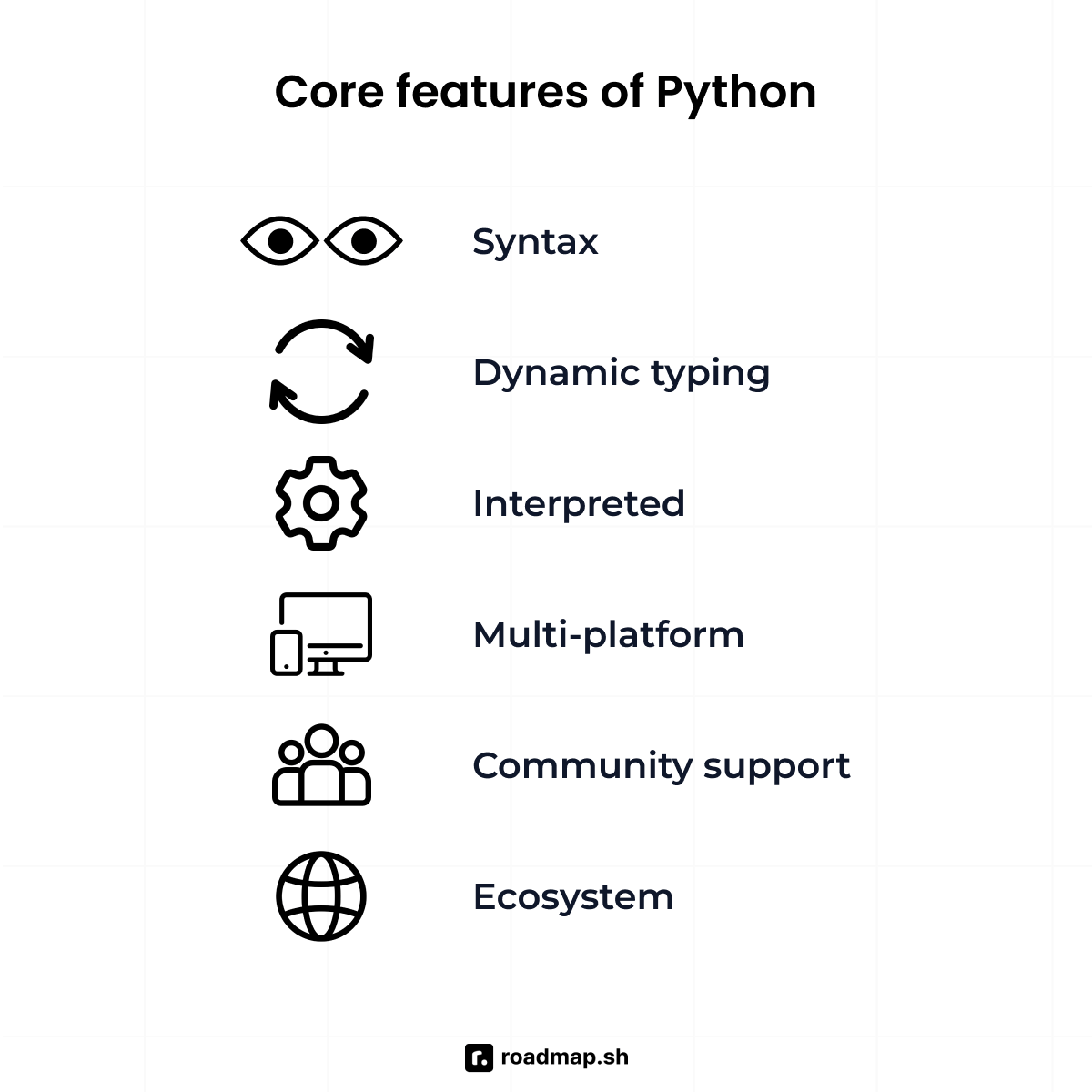
Core features of Python
Simple and readable syntax: Python’s syntax is intuitive for both beginners and experienced developers because it closely resembles English. Its clean and concise style lets you achieve your goals with fewer lines of code.
Dynamic typing: You don’t have to declare variable types explicitly in Python. This speeds up development and gives you more flexibility when writing code.
Multi-paradigm: Python supports different programming approaches, including object-oriented, functional, and procedural styles. This flexibility lets you choose the best way to structure your code.
Interpreted language: Python runs code line by line using an interpreter, which makes debugging and testing more straightforward.
Cross-platform: Python is platform-independent and works across Windows, macOS, and Linux.
Rich ecosystem and community: Python language has a massive library of frameworks and packages, like pandas, TensorFlow, Flask, and Django, for building just about anything. It also has a vibrant, supportive community that contributes resources, tutorials, and tools.
Common use cases for Python include the following:
Web development: Python makes it easy to build websites and web apps using frameworks like Django and Flask. For example, Instagram and Pinterest both use Django to power their platforms.
Data science and machine learning: With libraries like pandas, NumPy, and TensorFlow, Python is the top choice for data analysis, predictive modeling, and AI. Netflix uses Python for data insights and machine learning models that drive recommendations.
Automation and scripting: Python can automate repetitive tasks like renaming files, scraping data from websites, or generating reports. Many IT professionals and office workers use it to streamline daily workflows.
Software development: Python is often used to develop desktop applications, tools, and APIs. Dropbox, for instance, used Python to build the desktop client for its file-sharing platform.
Cybersecurity and ethical hacking: Python is widely used in the security field for writing scripts to test vulnerabilities, analyze malware, or automate security audits. Tools like Scapy and pwntools are Python-based and popular among ethical hackers.
Game development: With libraries like Pygame, Python is used to create simple 2D games and prototypes. Games like “Frets on Fire” were developed using Python and Pygame.
With Python basics and the use cases covered, let’s take a closer look at why Python is easier to learn than most people think.
Why Python is easier than you think
If you’ve heard horror stories online or spoken with someone who struggled to grasp programming concepts, Python’s simplicity might surprise you. Here’s why it stands out from other programming languages:
Python code reads like English
Unlike many other popular programming languages that use cryptic symbols and strict syntax rules, Python looks almost like plain English. Take this simple example in Python:
Now compare that to the same logic in a language like C++, which involves more complex syntax and formatting.
Python’s readable style makes it a go-to language for beginners.
You don’t need a complex setup
Getting started with most programming languages often involves installing several tools, setting up an Integrated Development Environment (IDE), and dealing with configuration headaches. With Python, you just install Python and start writing your first line of code in minutes.
Python works everywhere
Python gives you the freedom to explore multiple fields, like data analytics, software development, automation, artificial intelligence, and more. Its versatility means you’re not locked into one narrow path. Unlike some languages that are mostly tied to specific types of projects, Python opens up more career opportunities and learning experiences.
The Python community loves beginners
One of the best things about Python is how supportive its community is. A quick search for any Python-related question will bring up blog posts, tutorials, videos, and other useful Python learning resources. Whether it’s the official Python community or individual contributors, people genuinely want to help you learn. That kind of support isn’t always easy to find in other programming ecosystems.
While Python’s syntax reads like English, offers access to many exciting fields, and has an amazing community, there’s still a learning curve and some common misconceptions you should be aware of. Let’s take a look at them next.
What can make Python feel difficult?
Like any programming language, Python has concepts that can feel overwhelming when you're just starting. Below are some common stumbling blocks you need to watch out for:
Logic concepts can feel foreign
Loops, conditions, variables, and other core programming ideas can seem abstract at first, especially if you haven’t done any structured or logical thinking before. However, you don’t need to overthink it. Try thinking of it like giving step-by-step instructions to a robot or creating a recipe. You’re just telling the computer what to do, in the right order.
Trying to learn everything at once
Python is used in so many fields, like web development, data science, machine learning, and automation. It’s easy to feel like you need to learn all of it right away. But each use case has different concepts and tools to master. Trying to cover everything at once can slow you down and confuse you. The better approach is to pick one area that interests you, focus on it, build a few projects to strengthen your programming skills, and expand from there if you want. Along the way, don’t forget to join Python communities; they can provide guidance, feedback, and motivation as you grow.
Technical setup frustration
While one of Python’s strengths is how easy it is to install and start coding, the setup can still get tricky depending on what you're working on. For example, certain fields, like data science or web development, might require additional tools, libraries, or version management. This is especially true on Windows, where things can get a bit more complex. These setup issues aren’t unique to Python; they’re just part of working with technical tools, and they get easier with time and experience.
Unfocused practice
Like anything worth learning, diving in without a clear plan or consistent hands-on practice can make the process harder than it needs to be. Reading and watching tutorials is helpful, but typing the code yourself builds muscle memory and a deeper understanding. Think of it like learning to play an instrument; you don’t get better by just watching others play. You have to put your fingers on the keys and practice regularly.
Can I learn Python if I’m bad at math?
This question comes up a lot, and the answer is: No, you don’t need to be a math whiz to learn Python.
Basic Python programming relies more on logic and pattern recognition than advanced math. You won’t need algebra, calculus, or statistics to write your first program, automate tasks, or even do basic data analysis. Think of it this way: if you can follow a recipe, plan a budget, or organize a to-do list, you’re already using the type of logical thinking Python requires.
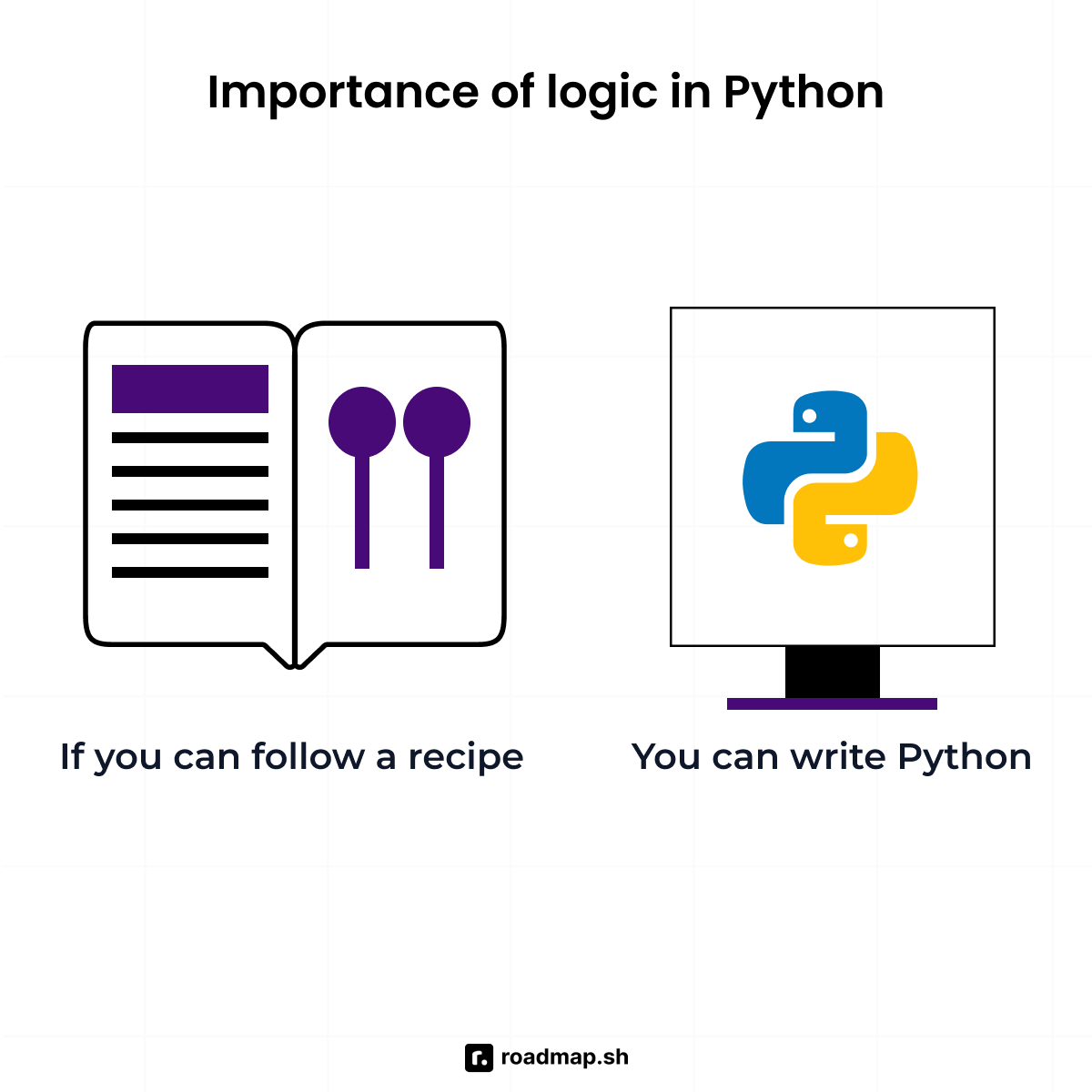
That said, if your long-term goal is to get into data science or machine learning, some math concepts will eventually be helpful. Fields like these often rely on linear algebra, probability, basic statistics, and other advanced Python concepts to build models and interpret results. Many beginners wonder how difficult Python really is in this context, but the good news is you can always learn these math concepts later, as you need them. In fact, Python often makes math easier to understand with libraries like NumPy and Pandas, which handle complex calculations and data manipulation for you.
Is SQL harder than Python?
This is another common question, especially for people interested in data-related careers. The short answer is: they serve different purposes, and Python is often seen as slightly more intuitive for beginners.
SQL (Structured Query Language) is used to store, retrieve, and manage data in relational databases. Unlike most programming languages, SQL is declarative, meaning you describe what you want the database to return, and it figures out how to do it. For example, instead of writing loops or conditions, you’d write something like:
SQL is great for working with structured data and asking specific questions about it. Python, on the other hand, is more versatile. It can automate tasks, analyze data, build web apps, and much more. When you run Python code, it goes through the Python interpreter, which executes your instructions line by line. Many data professionals end up using both languages together: SQL to query data, and Python to analyze and visualize it.
If you're still deciding which one to start with, our SQL vs. Python comparison guide breaks down the pros and cons based on your goals. And if you feel SQL is a better fit for you right now, check out our beginner-friendly SQL course that offers a clear learning path.
With some common misconceptions cleared up, let’s explore what it actually feels like to learn Python and how to make the experience smoother.
What’s the best way to learn Python fast?
The key to learning anything quickly is staying focused and consistent, rather than cramming everything at once.
Pick one use case and stick with it
Don’t try to learn web development, data analysis, and automation all at once. Choose one area that genuinely interests you or solves a real problem in your life. For example, you could automate repetitive tasks like sending invoices, or analyze your personal spending by importing bank statements into a Jupyter Notebook and using Pandas to break down the data. Specializing early gives you context, helps concepts stick, and builds the momentum you need to master Python.
Code every day for 15–30 minutes
Short, consistent practice is way more effective than long weekend coding sessions. Your brain needs time to absorb new ideas, and daily repetition helps lock them in. Make coding part of your daily routine, just like having a coffee break, and use the time to review what you did the day before or tackle a small challenge to reinforce your learning.
Use visual, interactive platforms
Platforms like Replit, Codecademy, and DataCamp let you jump straight into coding without setting anything up. This keeps your attention on learning rather than getting stuck on installation errors or dependency issues.
Build projects early, even small ones
Don’t wait until you feel like you “know enough.” That feeling never really comes; there’s always more to learn. Start building simple Python projects like a currency converter in your first week. They might be basic, but you'll learn faster by doing.
Google everything and copy examples
This isn’t cheating; it’s how professionals work. Stuck formatting a date string? Google something like "python convert string to datetime" and grab a snippet from Stack Overflow, or use the Roadmap AI Tutor to help out. The real skill is knowing what to search for and how to tweak examples to fit your needs.
Can I learn Python on my own?
Yes, you can learn Python on your own. Many successful Python programmers are self-taught, including those working at major tech companies such as Google, Meta, and Spotify. Whether you're a student, career switcher, or hobbyist, learning Python on your own is not only possible, it’s incredibly common. Below are some factors that make self-learning Python easy and more effective:
Free resources are everywhere
From YouTube tutorials that walk you through beginner projects step-by-step, to interactive websites like freeCodeCamp, W3Schools, and Real Python, you have access to high-quality instruction at no cost in Python courses. Structured learning paths, like our Python roadmap, provide a clear sense of direction, helping you avoid the overwhelm that can come from jumping between random tutorials and online Python courses. Even the official Python documentation, often overlooked by beginners, is well-organized and surprisingly beginner-friendly once you know how to navigate it.
Communities provide support
You’re not alone in your journey, even if you’re learning solo. Sites like Stack Overflow can help you troubleshoot specific errors, while Reddit communities such as r/learnpython offer encouragement, advice, and peer support. Discord servers and online forums dedicated to Python or programming in general offer real-time help from fellow learners and experienced developers alike. These communities are especially valuable when you're stuck on a bug or need feedback on a project.
Structure helps self-learners succeed
When you’re not following a classroom schedule, having a framework helps you stay on track. Try committing to a 30-day coding challenge, where you solve one small problem or build a feature each day. Or set a goal to complete three small projects over the next month, such as a calculator, a web scraper, and a command-line to-do list. These clear milestones provide a sense of progress and help you stay motivated.
The key to self-teaching is being honest about what you don’t understand and actively seeking help when stuck. It's normal to feel lost at times. Don’t just skim past confusing errors or concepts; pause, Google them, ask questions, and keep digging until it clicks. This habit of persistent problem-solving is what ultimately turns beginners into confident developers.
How long does it take to learn Python?
It really depends on your background, your goals, and how much time you can consistently put in. But with regular practice, you'll start feeling confident faster than you might think.
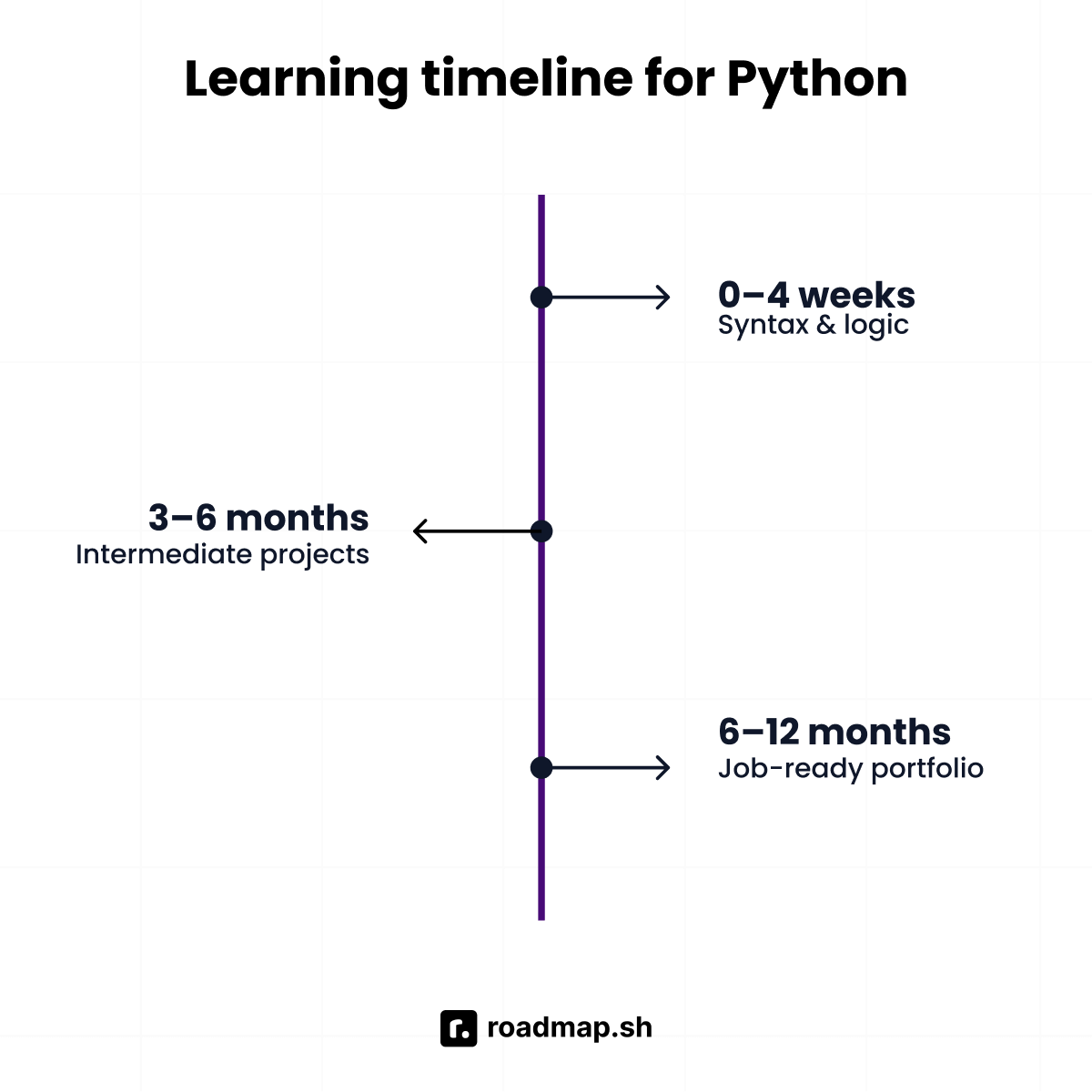
Basic Python syntax and logic concepts: 2–4 weeks of regular practice
In this early stage, you’ll get comfortable with Python’s syntax and foundational programming ideas. You’ll learn how to work with variables, data types, conditionals, loops, and functions. Many learners can already start writing simple programs like calculators, number-guessing games, or basic text-based tools after just a few weeks. If you’re consistent with 15–30 minutes of practice daily, you'll build solid muscle memory quickly.
After three weeks of learning, you might be able to write a program that takes a grocery list from a user and calculates the total bill, including tax. It’s not flashy, but it’s a working program, and that’s a huge win early on.
Intermediate project work: 3–6 months.
At this point, you’re building larger, more meaningful projects. You‘ll start learning how to use external libraries like Pandas for data analysis, Flask for web development, or Selenium for automation. You’ll also begin applying problem-solving skills to real use cases like analyzing CSV files, scraping websites, or building basic APIs.
Around the four-month mark, you should be able to build projects like a personal budget tracker, a weather dashboard using an API, or a simple blog with Flask. Don’t view these projects merely as learning exercises, but as practical tools you can actually use or showcase.
Job-ready confidence with a portfolio: 6–12 months.
Getting to a point where you’re ready to apply for jobs or freelance work usually takes between six months and a year of focused, consistent effort. By this stage, you’ve built a small portfolio of projects, understand version control with Git, and are familiar with tools relevant to your chosen domain, such as databases (SQL), APIs, testing frameworks, or cloud platforms. In addition, you've developed the soft skills needed to read documentation, debug code, and collaborate with others.
Many self-taught developers land junior roles or freelance gigs within 9–12 months by building and showcasing their Python skills through projects like a Django-based web app, an automation bot, or data visualization tools using real-world data sets.
No matter where you are in your journey, remember that progress isn’t linear. Some weeks you’ll feel unstoppable, knocking out tutorials and shipping features. Other weeks, you might spend hours stuck on something simple. That’s completely normal. The most important thing is to keep showing up, even when it's frustrating. Programming is as much about persistence as it is about logic.
What can you do with Python once you've learned it?
Python opens the door to a wide range of career paths and real-world applications. Whether you’re looking to switch careers, solve everyday problems, or just build something fun, Python gives you the tools to make it happen.
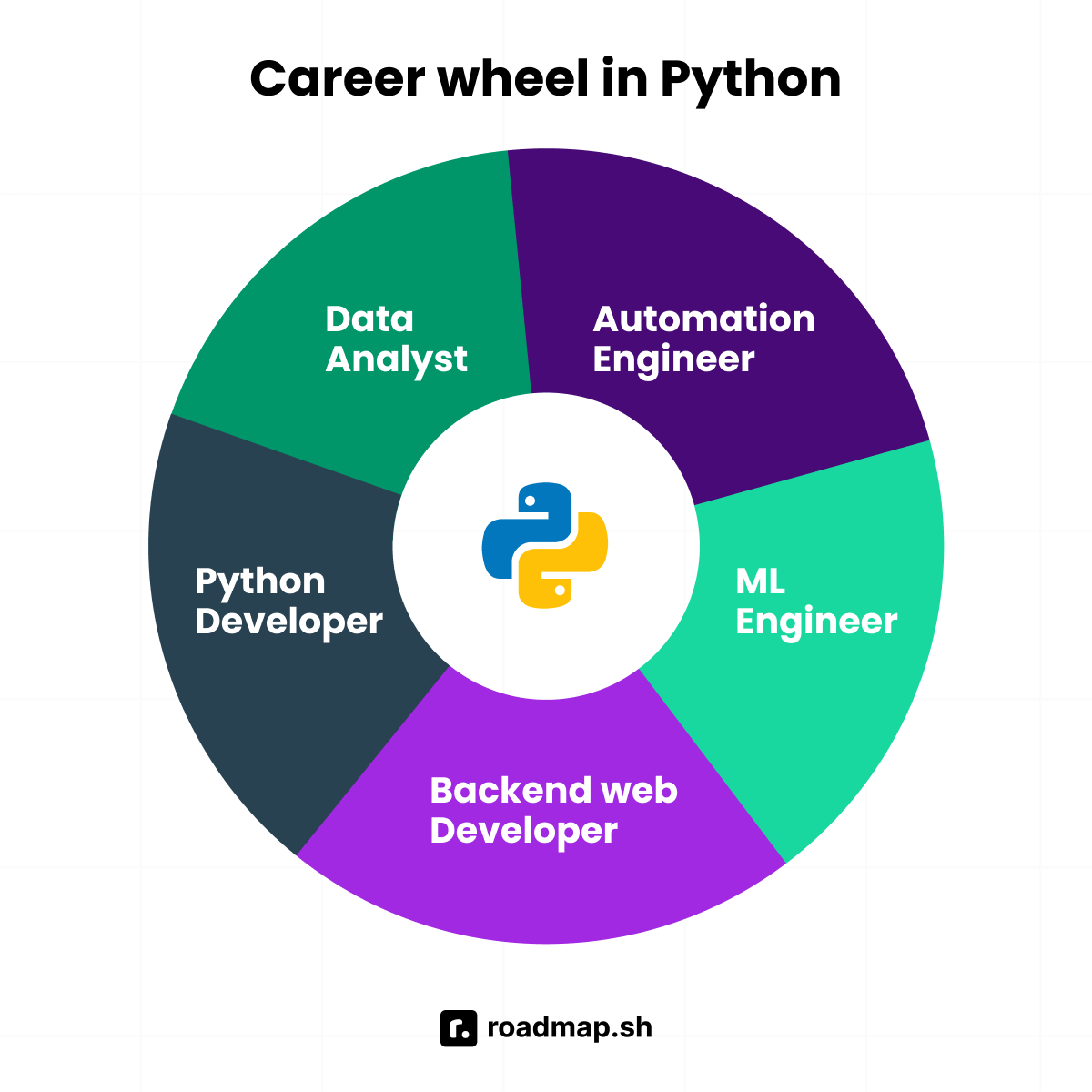
It’s one of the most in-demand programming languages out there, and mastering it can lead to high-paying, fulfilling roles. Here are some popular career paths:
Data Analyst: Clean, analyze, and visualize data to help businesses make informed decisions.
Automation Engineer: Write scripts to automate repetitive tasks, from file management to testing.
Python Developer: Work on backend systems, build APIs, or develop internal tools for companies.
Machine Learning Engineer: Train algorithms to make predictions or detect patterns using data.
Backend Web Developer: Use frameworks like Django or Flask to build the server-side of web applications.
Python is the hidden engine behind a lot of today’s internet infrastructure, artificial intelligence, and data-driven innovation. Learning it connects you to a global ecosystem of tools, technologies, and opportunities.
Wrapping up
It’s easy to feel overwhelmed when starting something new, especially with so many tools, trends, and languages competing for your attention. But the truth is, Python is one of the best investments you can make in yourself. It’s beginner-friendly, practical, and packed with potential.
The key is to start small and stay consistent. You’ll be surprised how quickly things start to click. The skills, confidence, and opportunities you gain make it more than worth the effort.
Check out the Python roadmap to get started and join the roadmap community to stay connected with like-minded individuals.
 William Imoh
William Imoh